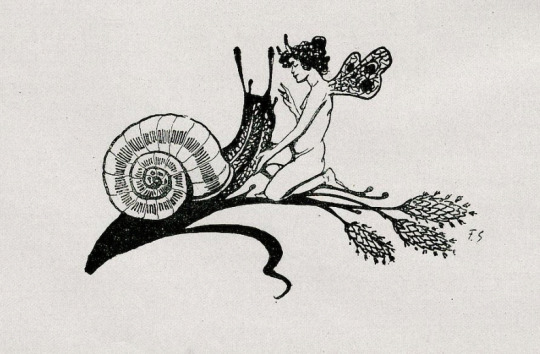✧ ALASTAIR • 26 ✧Battalion boytoy. History enthusiast, illustrator, reenactor, and writer. ✧If your blog is only for erotic/kink you might like my sideblog better @my-dear-private.General bigots and trolls piss offSociety6
Don't wanna be here? Send us removal request.
Text
if you're in the throes of cosmic despair i cannot recommend museums enough. art or science or history it doesn't matter. oh we're all connected, all of us and everything, throughout all time and space, and no one, no one, no one is alone? awesome. that's what i thought i just wanted to make sure.
46K notes
·
View notes
Text
Last attempt before doing a massive patch… I remember when I used to do acrylic painting, if I got the paint on my clothes, especially if it was rubbed in, the clothes were ruined because the paint stained. I figured I could just try to “stain” the stain. Guess the art degree finally came in handy because look at the colour match I just did (left splotch for colour comparison)

I need some advice removing a mystery stain from a wool tunic.
Someone gave me an extra tunic for WW1 reenactment (made probably the late 40s or 50s, not sure if it’s a wool blend or not) and I’d love to wear it for a reenactment this weekend. But for some reason, it has a single mystery red stain in the very middle. It looks like a fake blood spot done for a display that someone unfortunately left for god knows how long. I have no idea when the stain was made and no idea what it could possibly be to know what to use to remove it. But whatever it was must’ve been seriously dye based because I have spot cleaned this thing over 10 times already with both vinegar and an oxi stain remover. Varying lengths of time, various amounts of product, soaked for half an hour, overnight, hot water, cold water, etc, everything, and it has barely faded.
Anybody have any idea what I could do? (Pic when I first got it)

259 notes
·
View notes
Text
Thanks for all the tips, but nothing seems to be working. It’s not wine or food based, it has a deliberate cartoon “splat” shape when the stain is matched together. I took it by a few dry cleaners who said the stain looked like it had been set years before I even got to it so even with their cleaning process it probably wouldn’t be effective, and any of their chemical removals may damage the garment beyond repair. I’m resorting to a 1940’s book on patching wool. I’m taking the sleeves up anyway which leaves me with more than enough material to make the patch from. So wish me luck!
A note to any new reenactors: never EVER use any kind of fake blood on a period garment. That’s a 1940s piece effectively ruined by such a dumb decision
I need some advice removing a mystery stain from a wool tunic.
Someone gave me an extra tunic for WW1 reenactment (made probably the late 40s or 50s, not sure if it’s a wool blend or not) and I’d love to wear it for a reenactment this weekend. But for some reason, it has a single mystery red stain in the very middle. It looks like a fake blood spot done for a display that someone unfortunately left for god knows how long. I have no idea when the stain was made and no idea what it could possibly be to know what to use to remove it. But whatever it was must’ve been seriously dye based because I have spot cleaned this thing over 10 times already with both vinegar and an oxi stain remover. Varying lengths of time, various amounts of product, soaked for half an hour, overnight, hot water, cold water, etc, everything, and it has barely faded.
Anybody have any idea what I could do? (Pic when I first got it)

#something green there is better than red cos it is still so noticeable#like actually gutted#hopefully patching works
259 notes
·
View notes
Text


The perfect excuse for a date.
ig credit: october.ly.
291 notes
·
View notes
Text
I need some advice removing a mystery stain from a wool tunic.
Someone gave me an extra tunic for WW1 reenactment (made probably the late 40s or 50s, not sure if it’s a wool blend or not) and I’d love to wear it for a reenactment this weekend. But for some reason, it has a single mystery red stain in the very middle. It looks like a fake blood spot done for a display that someone unfortunately left for god knows how long. I have no idea when the stain was made and no idea what it could possibly be to know what to use to remove it. But whatever it was must’ve been seriously dye based because I have spot cleaned this thing over 10 times already with both vinegar and an oxi stain remover. Varying lengths of time, various amounts of product, soaked for half an hour, overnight, hot water, cold water, etc, everything, and it has barely faded.
Anybody have any idea what I could do? (Pic when I first got it)

#actually driving me insane because the rest if the tunic fits me perfectly#I want to wear it so bad#like yes my webbing covers most of it but that means I can’t wear my tunic without a belt#fashion#sewing#reenactment#historical fashion
259 notes
·
View notes
Text
If you’re LGBT reblog and tag with your opinion on beer.
185K notes
·
View notes
Text

OH MY GOD 🥹
Taken from Lawrence of Arabia The 30th Anniversary Pictorial History
388 notes
·
View notes
Text
you can discuss the problems within academia literally forever and you probably should but “historians are trying to keep information from you” is always going to be an anti-intellectual, reactionary opinion, sorry, literally no way around that
24K notes
·
View notes
Text

#I just realised mine aren’t even famous they’re just dead#Sgt. Sidney Beldam and a Lcpl and Pte from the 14th Royal Warwickshire reg
1K notes
·
View notes
Photo


Romeo and Juliet (1968) dir. Franco Zeffirelli
13K notes
·
View notes
Photo

Gustave Doré : “Joyeuseté” ou “À saute-mouton”, bronze, vers 1881. (Musée d'Orsay, Paris)
4K notes
·
View notes
Text

Dutch silver serving set, late 18th - early 19th century
228 notes
·
View notes
Text
fuck it’s august??? what’s next? 2022???? can’t do this anymore
156K notes
·
View notes



